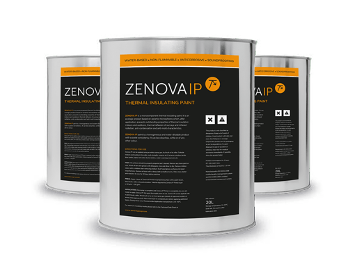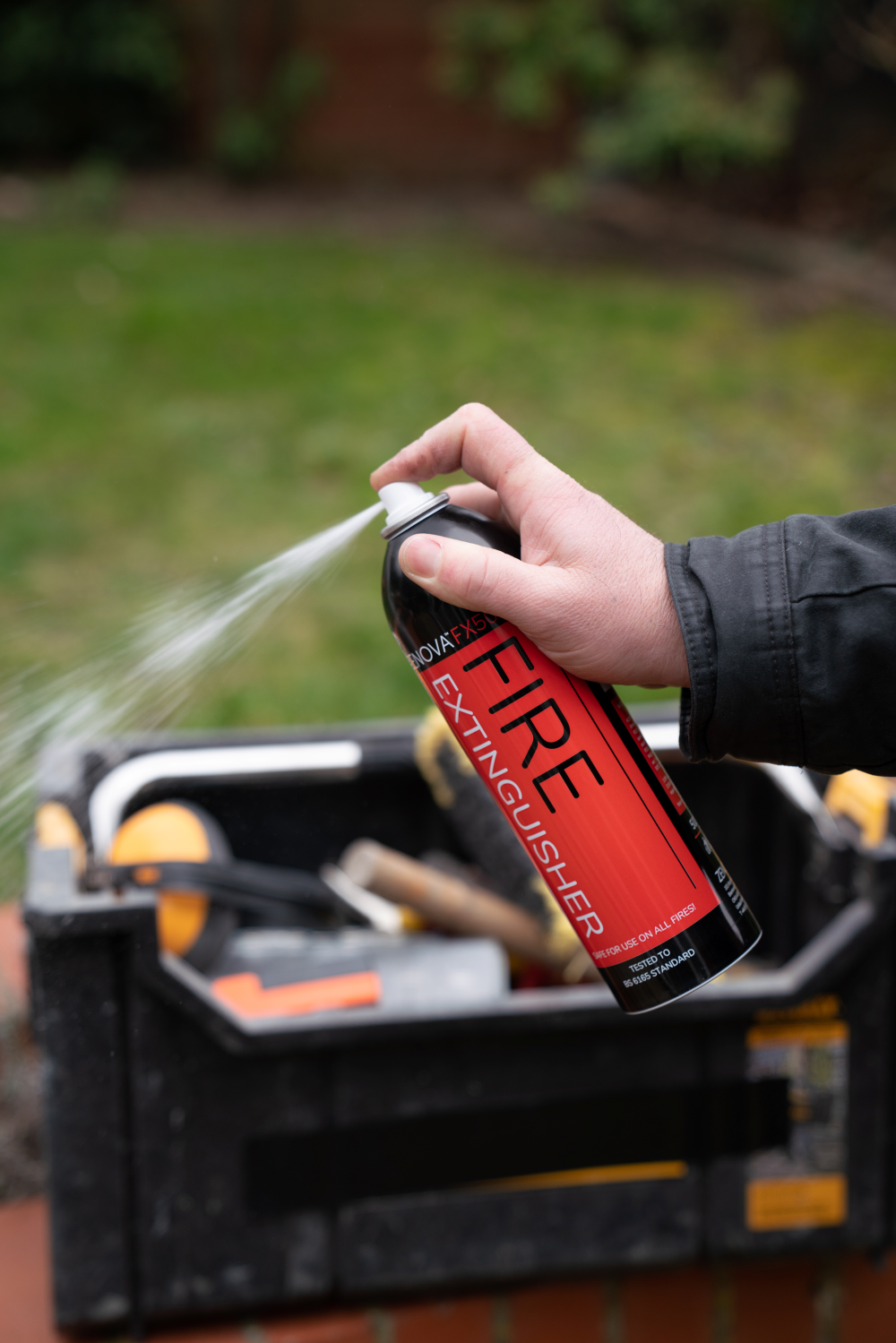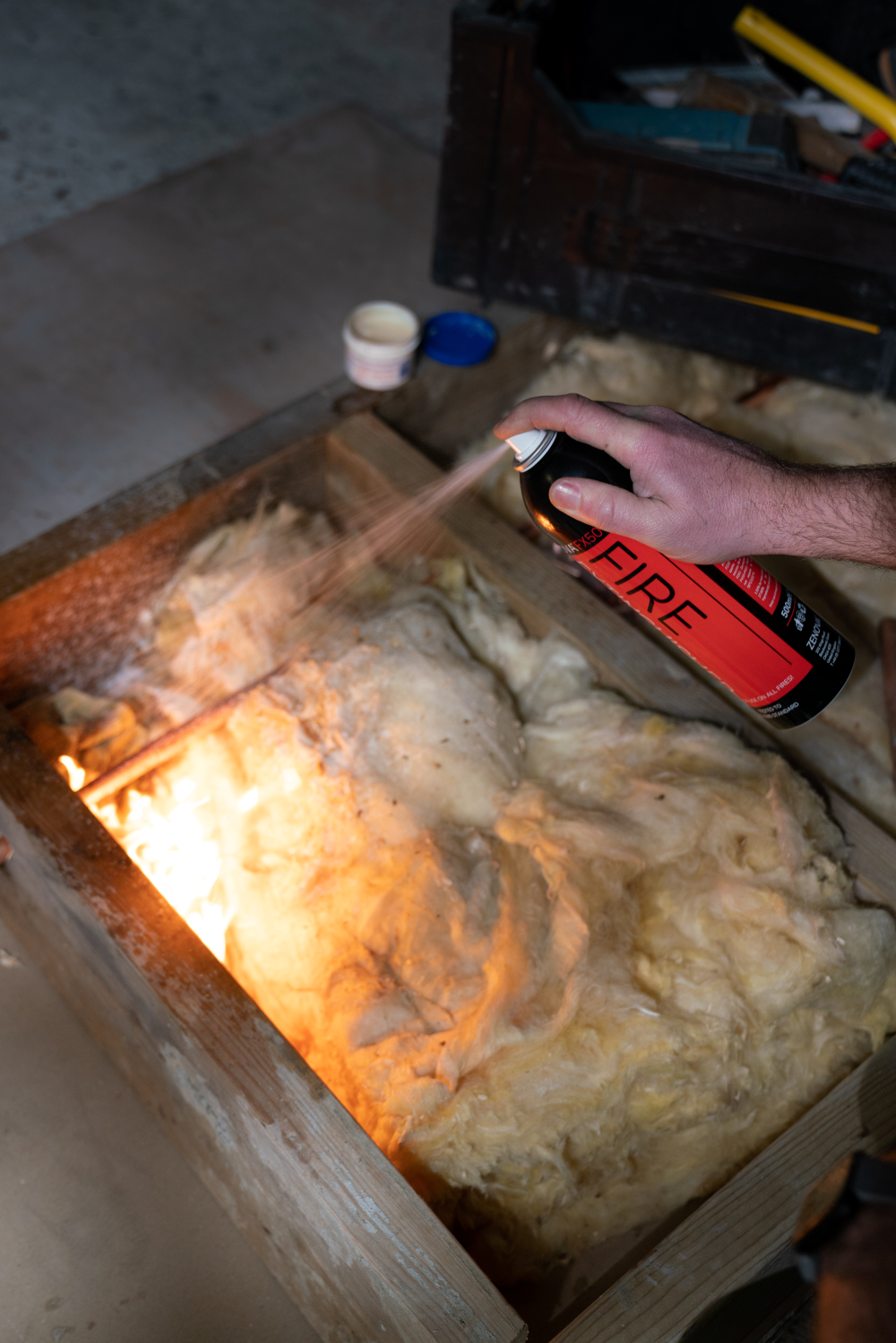With energy costs rising, improving the thermal insulation performance of our homes is something many homeowners are thinking about. In this guide, we'll cover everything you need to know about insulating paint, so you can decide which paint is best to help improve your home's insulation.
What actually is thermal insulation paint?
Insulating paint or thermal paints are decorative coatings specifically designed to improve the thermal performance of a surface. Thermal insulating paints all work in different ways, depending on the situation. Thermal insulating paints generally come in two forms: exterior thermal insulating paint and interior thermal insulating paint. While both work on the premise of providing properties with added insulating properties, they achieve this in different ways. However, our company, Distreo, offers the uniquely formulated paint that can be applied to any surface, regardless of the contact material. We offer both a paint that can be applied to any material, Zenova IP, and a specialized facade paint, Zenova IR.

Contrary to popular belief, external walls that are made of brick, stone, plaster or concrete are porous, meaning they can absorb moisture. External insulating paint works on the premise that a 5% moisture content in a wall can reduce the insulating performance of the material by 50%. Given that 35% of a property’s heat is lost through its external walls, by keeping them dry you can significantly improve the thermal efficiency of a property.
Interior thermal insulation paints work as emulsions that are applied to interior walls and can prevent heat loss from the inside of a property. The highly advanced technology in these emulsions helps to absorb moisture as it tries to escape from the interior wall to the exterior wall of a property. When this heat is absorbed into the emulsion, it is then rejected back into the room, instead of escaping. This helps to recycle heat into the internal environment of a room, maintaining constant temperatures for longer.
Is thermal insulation paint only applied to the walls of a room?
Thermal insulation paint is not limited to application to the walls of a room, but has a wide range of applications beyond the interior of residential or commercial buildings. Its versatility allows it to be used on various surfaces and in different environments where thermal insulation is beneficial.
Here are some practical applications of thermal insulation paint:
- Exterior surfaces : Can be applied to the exterior walls of buildings to reflect solar radiation and reduce heat absorption, which is particularly useful in hot climates to keep buildings cooler and reduce air conditioning costs.
- Roofs : Applying thermal insulation paint to roofs can significantly reduce heat gain inside a building, as roofs are often the surface most exposed to sunlight. This application can lead to substantial energy savings in cooling systems during hot seasons.
- Pipes and ducts : It can insulate hot and cold pipes, reducing heat loss from hot pipes and condensation on cold pipes, thus saving energy and preventing moisture problems.
- Industrial Equipment : Tanks, fluid containers, boilers, and other industrial equipment can benefit from thermal insulation paint to maintain temperature control, increase energy efficiency, and protect against corrosion.
- Transportation Vehicles : Some thermal insulation paints are used on transportation vehicles, such as trucks and ships, to protect cargo from temperature variations and reduce energy requirements for cooling or heating.
- Refrigeration units : Can be applied to the surfaces of refrigeration units to improve thermal efficiency by minimizing unwanted heat exchange.
The wide applicability of thermal insulation paints highlights their usefulness in improving energy efficiency, strengthening protection measures against environmental factors, and contributing to sustainability goals in various sectors.
Other practical applications of thermal insulation paint in homes
Penetrating damp and mould are caused by an external source of moisture entering through the external wall of a property. The moisture can enter through a defect in the external wall, such as a crack or hole, or simply by being absorbed into the porous material of the building. The reason why properties suffering from penetrating damp are a key indicator that they could also be suffering from heat loss is because there is moisture in the external wall. If your external walls are showing signs of damage, such as cracks or holes, this is a sign that the wall is suffering from penetrating damp. In addition, any damp spots on the internal and external walls, discoloration and the appearance of mould, or a musty and musty smell can all indicate that moisture is entering the property through the external wall. If this dampness is not prevented, not only will heat be lost from the property more easily, but it can also lead to a host of other problems relating to the performance and appearance of the external walls.
Can ZENOVA IP help us against mold?

Mold growth is primarily fueled by moisture build-up and poor ventilation. Insulating paints that help regulate indoor temperatures can reduce the likelihood of condensation, a common cause of moisture build-up. ZENOVA IP improves the level of thermal insulation on the wall, ceiling or floor on which it is applied. As a result, the conductivity of the wall surface is reduced to maintain a constant temperature, thus reducing the chances of condensation. As a result, mold and excessive humidity are prevented.
For more details about Zenova IP thermal insulation paint or to purchase it, you can contact us at the email address office@distreo.ro or at the phone number +4 0747 223 330.




Write a comment
Comments are verified before being published.
This site is protected by hCaptcha and the hCaptcha Privacy Policy and Terms of Service apply.